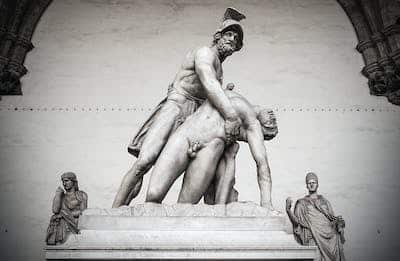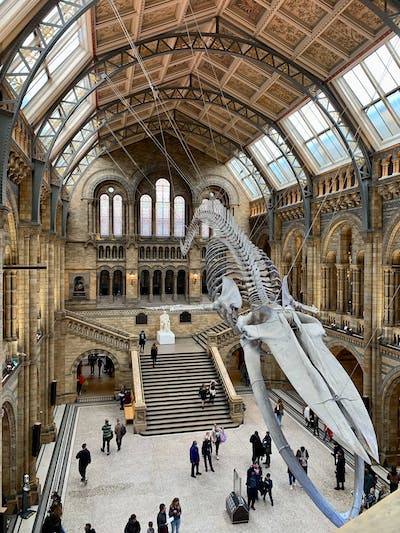The Largest Creation Museum in America

Historical Background and Important People
Creation Museum: Over the years, the American creation museum business has experienced amazing expansion, drawing visitors from a wide range of backgrounds. By presenting a biblical account of the universe’s and life’s beginnings, these museums hope to challenge the widely accepted theory of evolution in science.
This article will examine the several American creation museums and determine which draws the most visitors. We may learn a great deal about this fascinating phenomena by investigating their historical background, significant individuals, and evaluating their influence.
The Petersburg, Kentucky, Creation Museum
Situated in Kentucky’s Boone County, the Creation-Museum plays a major role in drawing visitors who are interested in a biblical perspective. This museum was founded in 2007 by the Answers in Genesis organization, which is headed by well-known founder Ken Ham. It features displays that highlight the views of young-earth creationists. The museum has life-size replicas of Noah’s Ark along with elaborate dioramas and animatronic exhibits. Many Christians and creationists have found it appealing because of its commitment to presenting a biblical story.
The Ark Encounter in Williamstown, Kentucky
The Ark Encounter, which is also located in Kentucky, is another popular creation museum. It was also started in 2016 by Answers in Genesis, a group led by Ken Ham. A life-sized reproduction of Noah’s Ark, constructed in accordance with the biblical measurements described in the Book of Genesis, is on display at the Ark Encounter. This museum provides an immersive experience by letting guests tour the ark’s many decks and displays. Both believers and unbelievers are drawn to it by its majesty and painstaking attention to detail.
Dallas, Texas’s Institute for Creation Research Museum
Another important organization in the creationist field is the Institute for Creation Research Museum, which was founded in 1970 by the well-known creation scientist Dr. Henry M. Morris. Located in Dallas, Texas, this museum challenges evolutionary ideas by presenting a scientific argument for biblical creationism. It offers instructional materials, displays, and collections that illustrate arguments for a biblical worldview supported by science. Despite being smaller than the other two museums, it nonetheless draws people who are curious about creationism’s scientific roots.
Important People in the Creation Museum Sector
Ken Ham
As was already said, one of the most important people in the creation museum sector is Ken Ham. As the originator of Answers in Genesis and the brains behind the Creation Museum and the Ark Encounter, Ham has been instrumental in influencing the American narrative surrounding young-earth creationism. His commitment to showcasing a biblical perspective and his artistic talent have made a substantial impact on these museums’ capacity to draw large numbers of visitors.
Dr. Henry M. Morris
Known as the founder of the contemporary creationist movement, Dr. Morris has made a substantial impact on creationism. He cleared the path for the fusion of scientific reasoning with biblical interpretation as the creator of the Institute for Creation Research and the Dallas museum that goes with it. His focus on creationism based on research has had a long-lasting effect on the movement, drawing enthusiasts and detractors alike to the Institute’s displays.
Other Notable People
In addition to Dr. Henry M. Morris and Ken Ham, a number of other people have also had a significant impact on the creation museum sector. These include researchers such as Dr. John C. Whitcomb Jr., co-author of the well-known book “The Genesis Flood,” and Dr. Kurt Wise, a paleontologist who supports young-earth creationism. Their knowledge and commitment have increased the legitimacy of creation museums and drawn visitors who are looking for scientific proof that supports biblical narratives.
Views, Evaluation, and Upcoming Changes
Positive Aspects
One of the primary advantages of creation museums is their capacity to offer an alternate interpretation of life’s beginnings while promoting discussion and critical thought. For those who feel excluded by the prevailing scientific narrative of evolution, these museums provide a forum. They appeal to believers looking for a better knowledge of their religious beliefs because they create a sense of community and offer educational opportunities.
Negative Aspects
Creation museums are criticized for encouraging pseudoscience and undermining the mainstream of science. They draw attention to the fact that these museums frequently selectively display evidence, ignoring the overwhelming amount of data that supports evolution. Furthermore, creation museums have come under fire for upholding a contentious worldview that is at odds with inclusion and diversity. When assessing the significance and appeal of these museums, it is critical to take these disadvantages into consideration.
Future advancements:
It is critical to take into account possible future advancements in the creation museum business given the ongoing evolution of scientific knowledge and societal shifts. Virtual reality and augmented reality, for example, have the potential to completely transform museum visits by offering more engaging and dynamic displays. Furthermore, there could be a stronger focus on balancing religious and scientific viewpoints, encouraging a more sophisticated conversation between the two.
Uncover The World’s Biggest Creation Museum: A Thorough Investigation
The emergence of creation museums has been a noteworthy development in the fields of science and religion. These museums represent creationism and seek to offer an alternate viewpoint to the generally acknowledged theories of evolution. This article explores the background, major players, significance, and notable people connected to “Discover The Largest Creation Museum in The World.” It will look at possible future advancements and provide a fair assessment of the advantages and disadvantages.
Historical Background and Important People
We must first look at the historical setting in which “Discover The Largest Creation-Museum in The World” initially formed in order to comprehend its development and impact. The idea of creationism has a long history of being entwined with religious beliefs. Creationism has been a point of contention between the scientific and religious worlds for ages.
An important turning point in this continuing conversation was the opening of the first creation museum, the Creation Museum, in Petersburg, Kentucky (USA), in 2007. Prominent young-earth creationist Ken Ham was one of the key players in the museum’s conceptualization and launch. Ham wanted to establish a venue that offered different scientific explanations derived from a literal reading of the Bible. Larger creation museums later emerged as a result of the substantial backing this ideological approach garnered from religious groups and like-minded individuals.
Influence and Notable People
‘Discover The Largest Creation Museum in The World’ has had an influence on a number of topics. It has influenced public opinion, refuted accepted scientific theories, and grown to become a hub for ardent creationists throughout the globe. These museums have given people a platform to examine and strengthen their religious beliefs about the beginnings of life by providing an alternate viewpoint.
Dr. Georgia Purdom is one well-known person connected to “Discover The Largest Creation Museum in The World.” Her work as a molecular geneticist was essential to the museum’s genetics and human genome exhibitions. Dr. Purdom is able to bridge the gap between scientific knowledge and religious interpretation because of her training in science and her creationist convictions. Her efforts have drawn experts from a range of scientific fields and improved the legitimacy of the museum’s exhibitions.
‘Discover The Largest Creation Museum in The World’ has also had a significant influence on instructional programs. Due to the increased interest in and study of creationism, materials and curriculum tailored to the integration of creation science in educational settings have been developed. A considerable number of students and educators have been impacted by the museum’s educational outreach activities, which have assisted in disseminating creationist lessons to a wider audience.
Views, Evaluation, and Upcoming Changes
“Discover The Largest Creation Museum in the World” is criticized for encouraging pseudoscience and undermining the mainstream of science about evolution. They argue that these kinds of museums disregard accepted scientific practices and offer a biased interpretation of the available data. Concerns concerning the possible distortion of scientific knowledge and its wider social ramifications are brought up by this criticism.
On the other hand, proponents of creation museums contend that they give religious people a crucial place in which to reconcile their beliefs with scientific theories. These museums are thought of as tools for promoting critical thinking, facilitating discourse between opposing viewpoints, and providing an alternative to secular interpretations of natural history. Thus, it is possible to regard creation museums as an expression of both religious liberty and the continuous search for the truth.
It is likely that ‘Discover The Largest Creation Museum in The World’ will carry on growing and changing in the future. These museums may continue to expand and gain influence because to the construction of new displays, technological developments, and the global interest in creationism. To guarantee fair portrayal of accepted scientific theories and data, however, the scientific community must continue having candid discussions with creationists.
Finding the world’s largest creation museum enables us to investigate the background, significance, important personalities, and notable people connected to these establishments. We can comprehend the intricate and continuous discussion between the religious and scientific worlds by examining both the good and bad parts. To encourage meaningful conversation and advance a better knowledge of the natural world, society must maintain an open and tolerant attitude toward various ideas as these museums continue to expand.

Final Thoughts on the Creation Museum
The American creation museum sector has drawn a sizable influx of visitors because of its distinctive method of offering a different explanation for the origins of life. Reputable establishments in this sector include the Institute for Creation Research Museum in Dallas, the Ark Encounter in Williamstown, and the Creation-Museum in Petersburg.
Renowned individuals such as Dr. Henry M. Morris and Ken Ham have made significant contributions to the appeal of these museums. Although they present an alternative viewpoint, creation museums are criticized for their contempt for the body of scientific evidence. Acknowledging the good and bad features facilitates a more thorough comprehension of this phenomena. Future development of creation museums will probably be influenced by advances in science and the ongoing quest for a constructive dialogue between faith and science.
